













The magazine of the art-form of the photo-essay
“A free, really high quality photo-essay magazine. Fabulous!”
Stephen Fry. British actor, writer and film & documentary maker

Oct 2014 back issue

by Simon Lambert


This photo-essay contains images that some people may find disturbing.
The tue-cochon (kill the pig) is a french countryside tradition: killing the pig, slicing the parts and cooking the meat.
Once it was one of the important elements of life in the country, but now it is now disappearing.
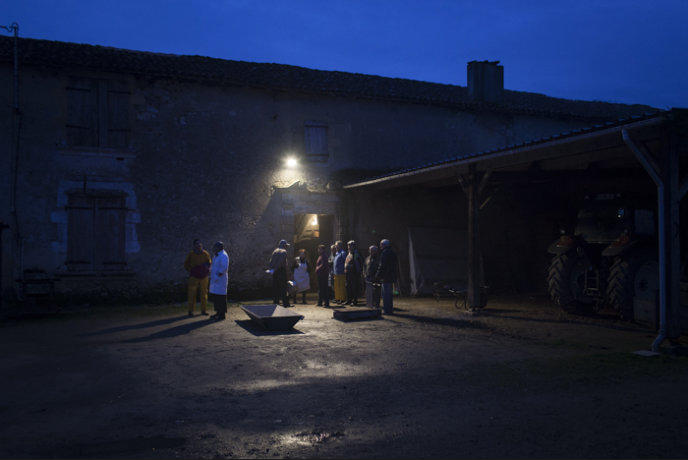
Participants gather at dawn in the farm yard before killing the pig. It's the occasion to chat and share news.
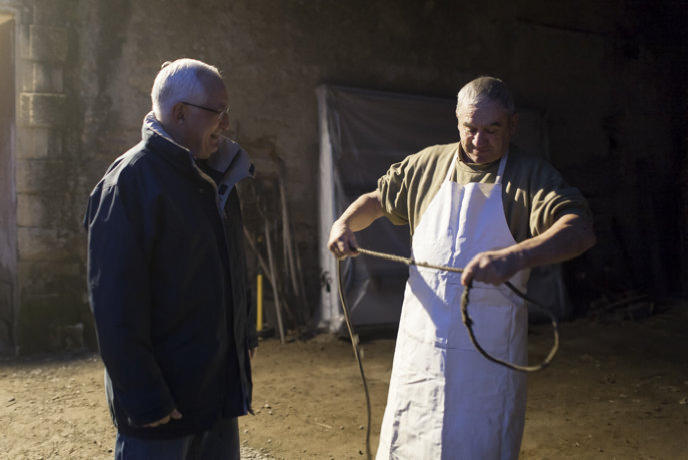
The butcher prepares the ropes used to tie the pig during the bleeding of the pig.
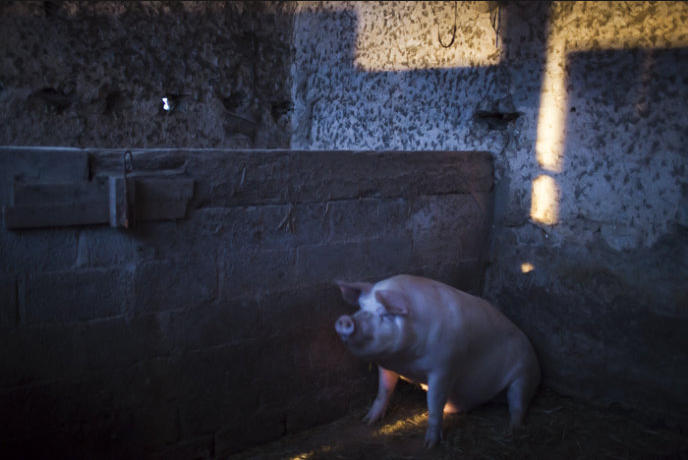
The pig was fattened for months before being killed and its meat cooked during the course of two days on the farm.
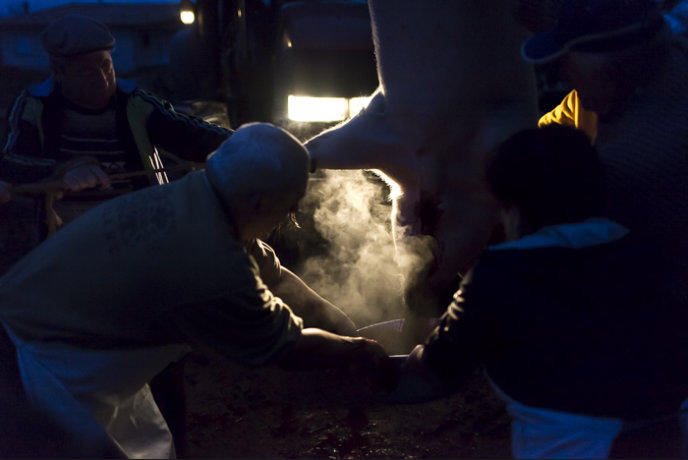
The delicate and crucial stage is the bleeding that has to be performed quickly. The pig's cry are ear-splitting and
tension can be felt in the air until the animal is motionless, silent and dead.
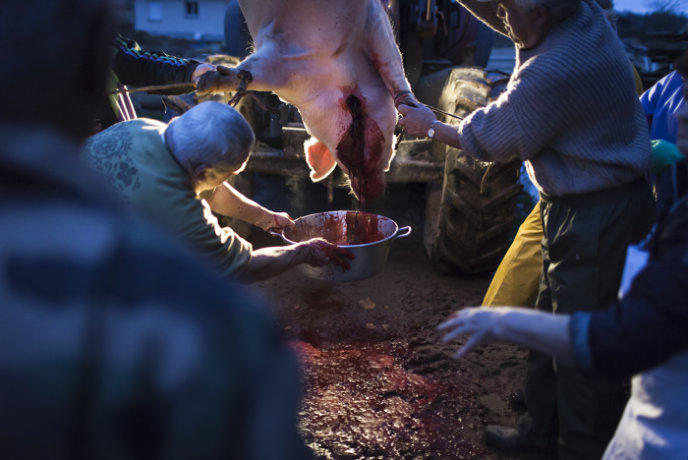
In order to cook the bood sausage, the pig's blood is collected by the butcher who holds a basin while other people
hold the pig to avoid abrupt movement that may cause loss of blood into the basin.
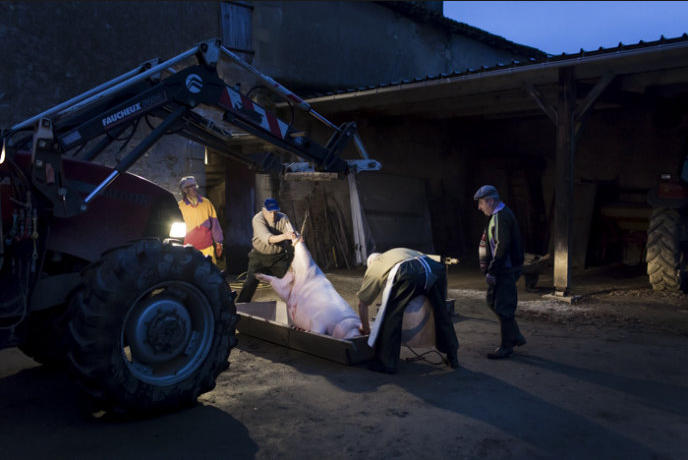
Once the pig's blood is collected, the animal is cleaned and shaved and put in a wooden bread box before the carcass
is chopped.
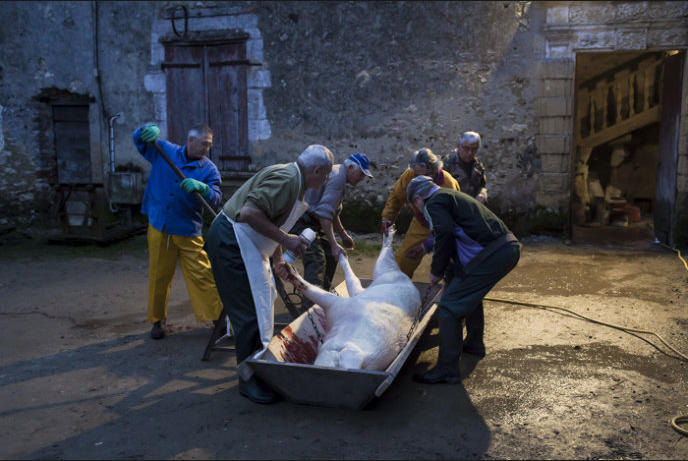
A large pigmay weigh up to 250 kilos and several man are needed to put it in the wooden bread box.
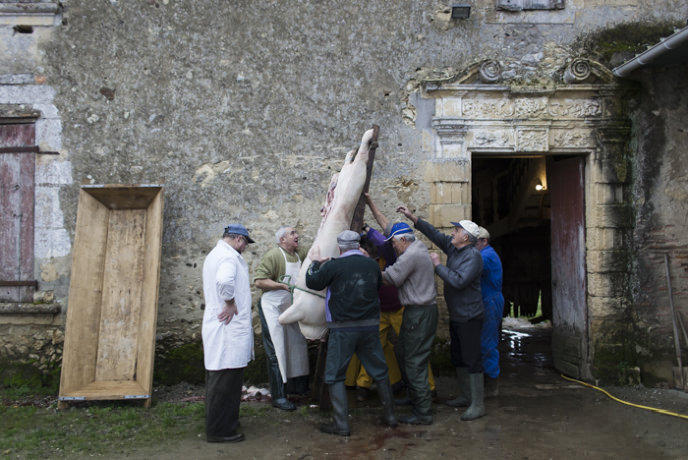
Once emptied, the carcass will rest a full night so the meat ‘tightens’ with the night's cold. The last drops of blood are
thoroughly evacuated and the pig is dry and ready to be chopped and cooked.
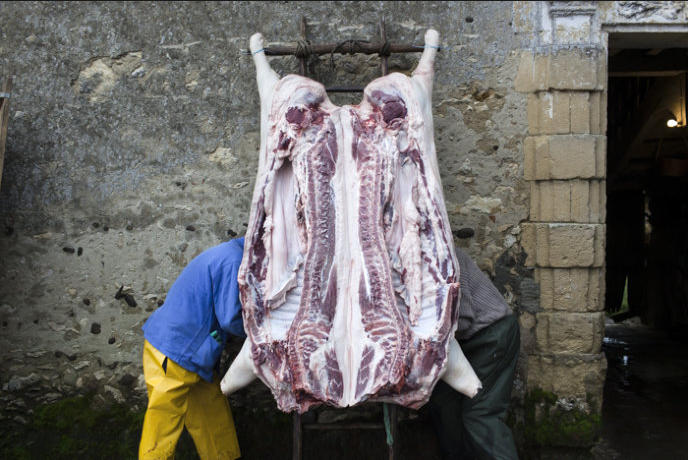
The pig's carcass rests outside so the meat ‘tightens’.
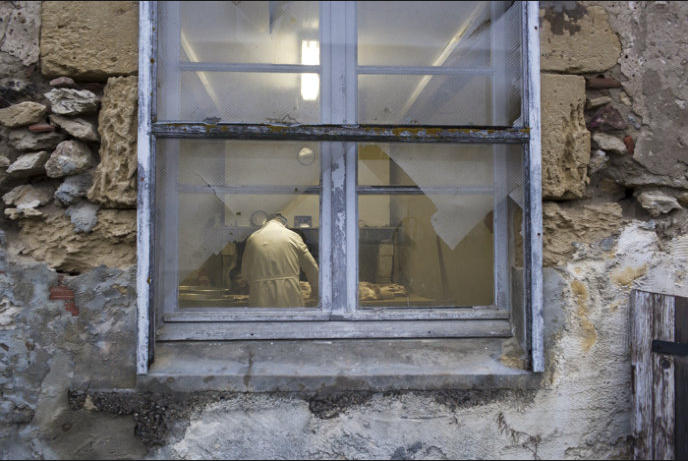
The butcher needs the morning to chop the whole carcass.
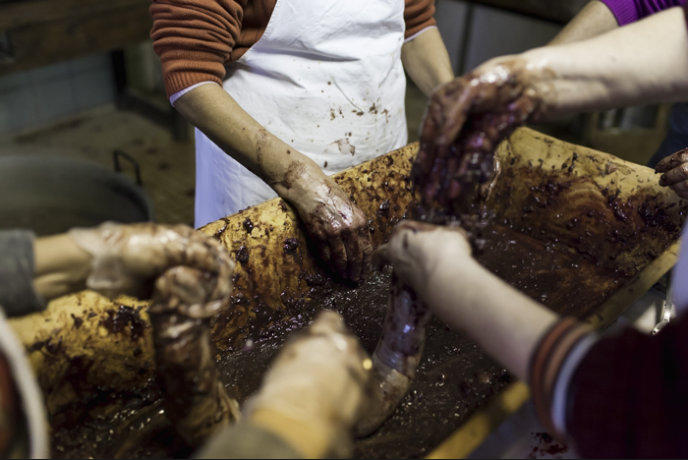
To prepare the blood sausages, cooked meat must be mixed with fresh blood. It's often the women's responsibility to
mix the elements.
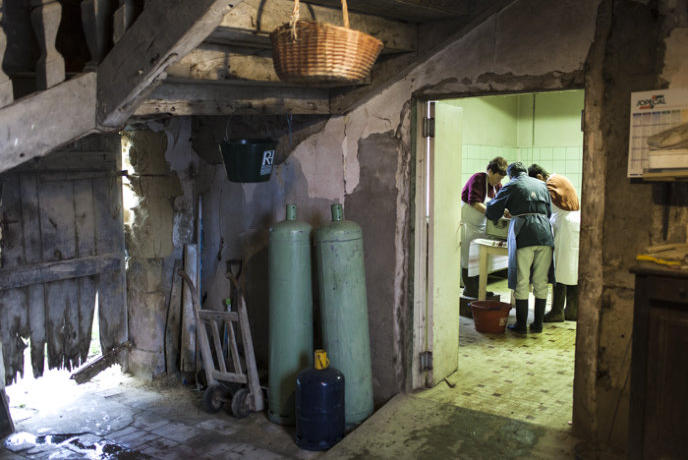
When the butcher emptied the guts, the women clean them with hot water. They will be used to make blood sausages
with the pork gut casings.
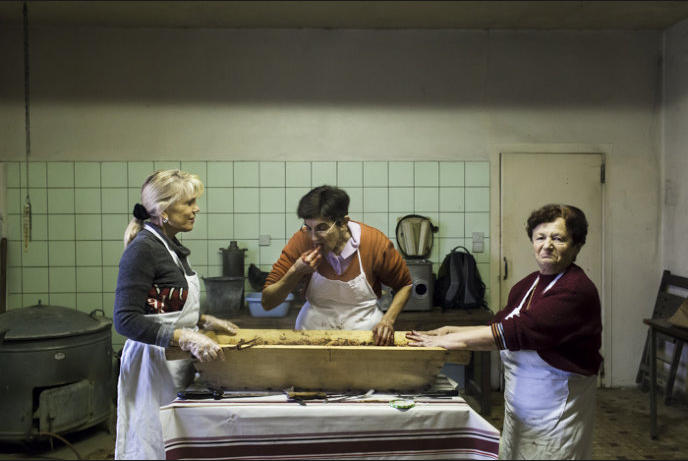
The salt, pepper and spices are added. To be sure the mixture is perfect, it has to be tasted before its is cooked. Some
like it, some others don't.
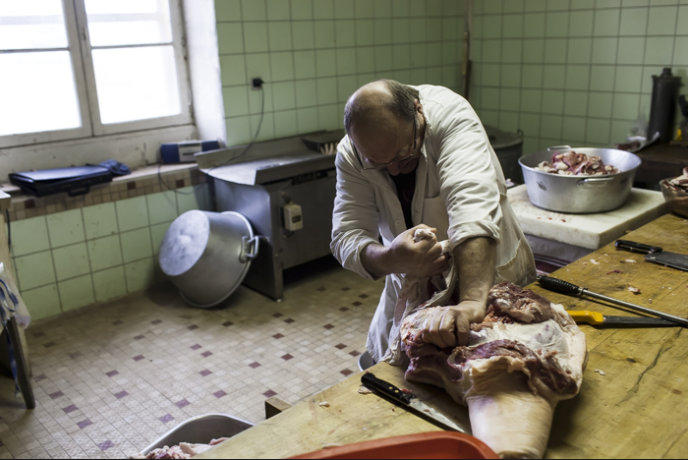
Slicing the carcass is alo a matter for a specialist. The butcher prepares the ham before it will be dried for several
months.
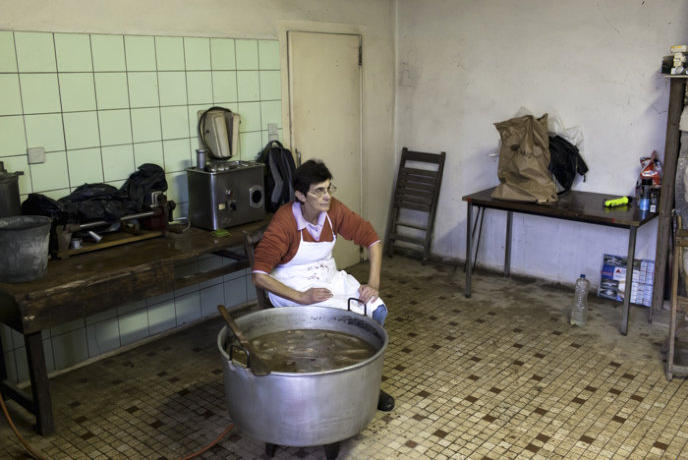
The blood sausages must cook for an hour in the stock that was previously used for the meat cooking. They have to
be watched regularly so they do not fall to pieces.
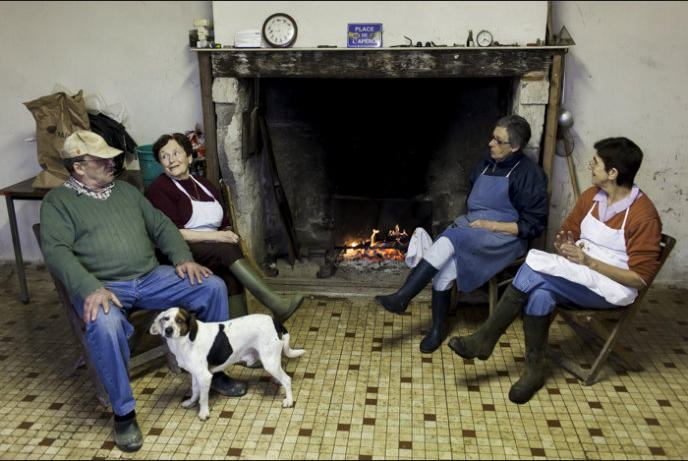
A light moment between farmers next to the chimney as the cooking goes on. The tue-cochon is an important moment
of togetherness for the farmers.
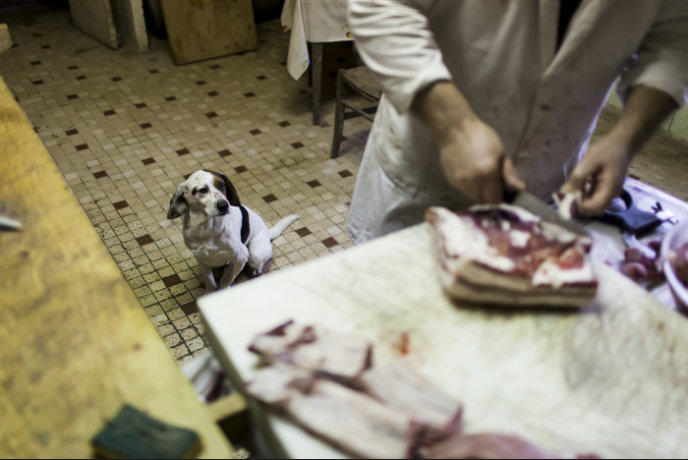
A farm without a dog is not a farm. Kilos of meat are sliced and cooked and the dog waits patiently for the butcher to
give him something to eat.


During the slicing of the pig, the butcher puts aside the best parts of the pig to be shared between the farmers, the
owner and the butcher.
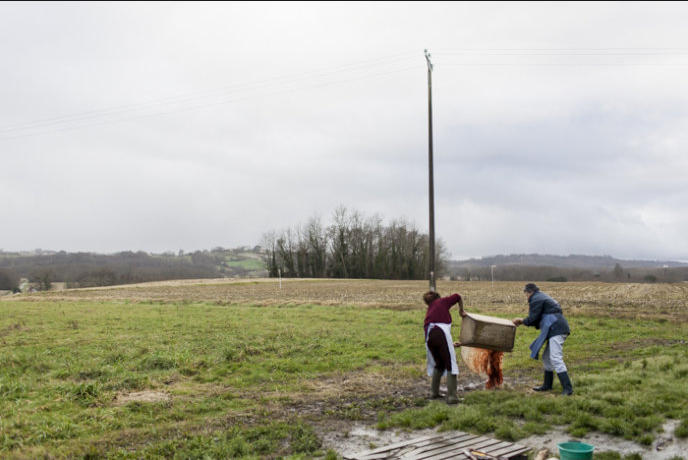
In a nearby field, women empty the wooden bread box that was used to prepare the blood sausages.











